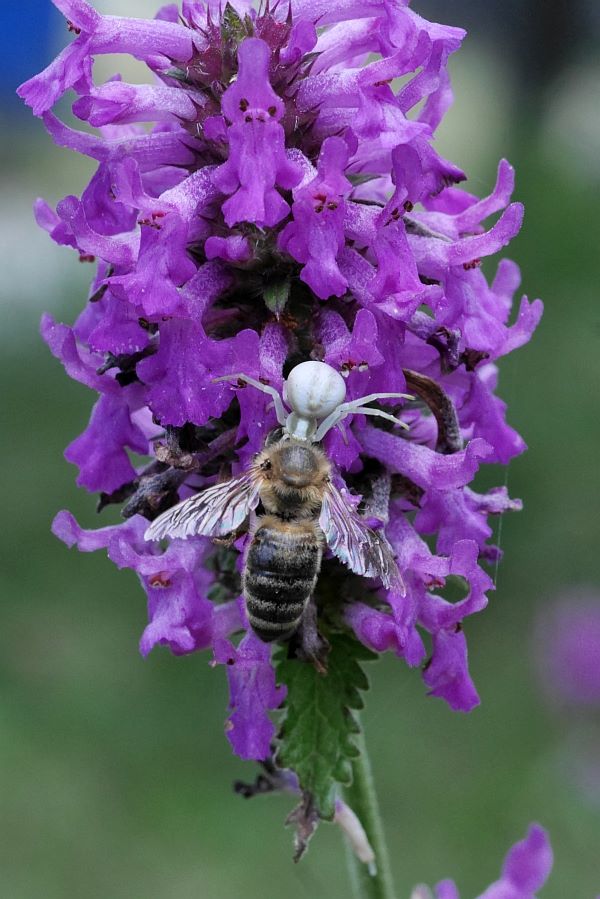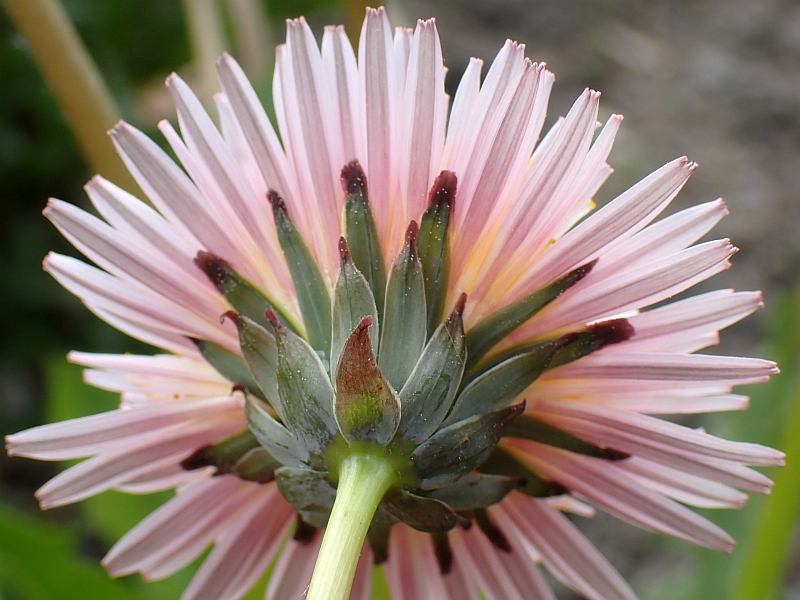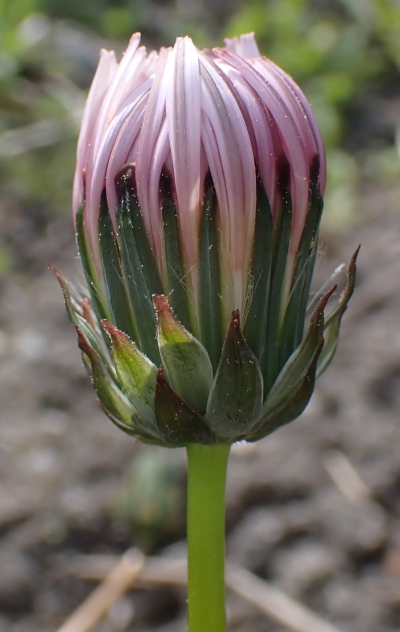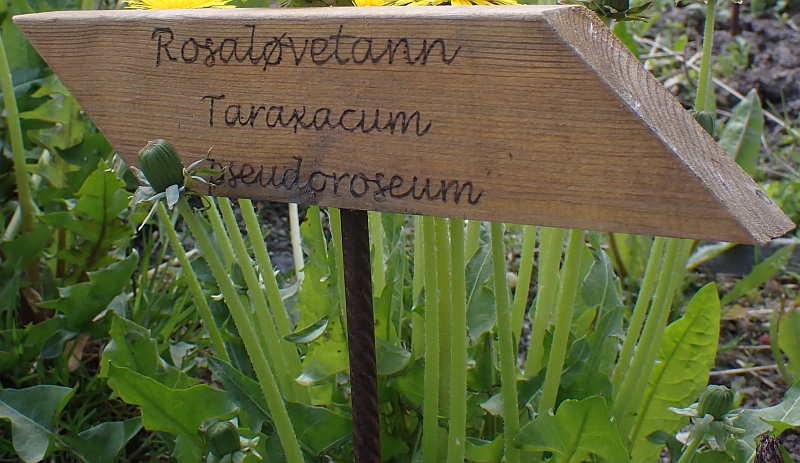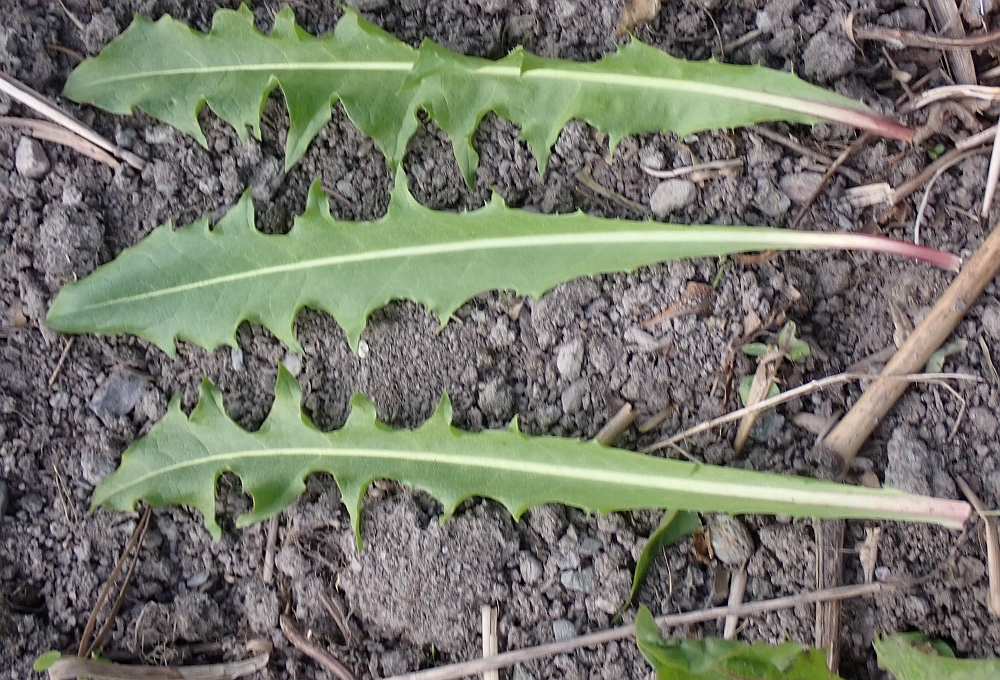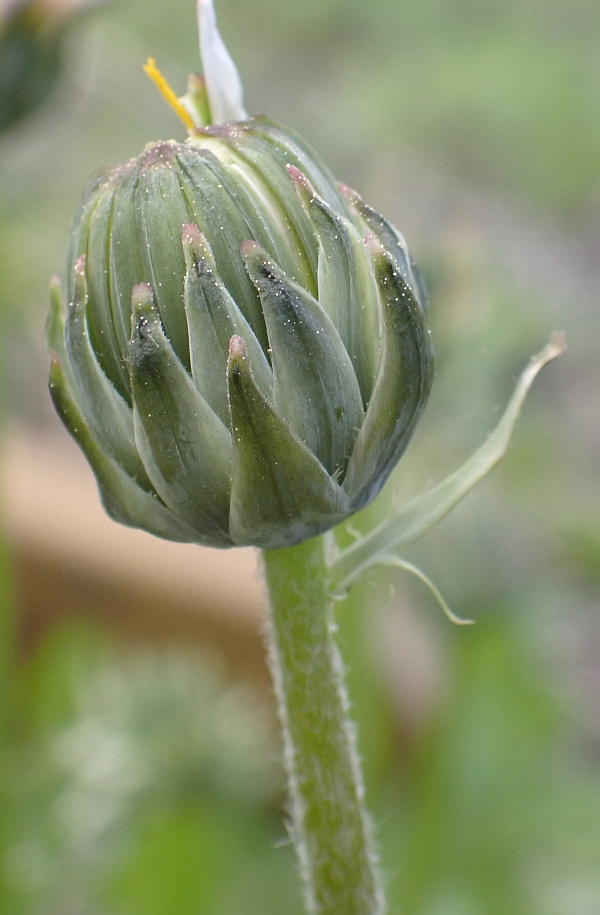On 30th June 2025, I made ryotto with various perennial vegetables available in the garden. The ryotto is stir-fried veg mixed with wholegrain organic rye with chili and a strong Norwegian organic blue cheese. In the video I talk you through the various greens:
Daubenton perennial kale
Allium wallichii (Sherpa onion / Nepal onion)
Rudbeckia laciniata (top shoots)
Cryptotaenia japonica “Atropurpurea” (purple mitsuba)
Aster microcephalus (Aster ovatus) top shoots
Hemerocallis dumortieri and Hemerocallis lilioasphodelus (flower buds)
Allium moly flower clusters
Hosta – leaves of 2 varieties plus a flower shoot
2nd batch:
Urtica dioica and Urtica kiovensis (stinging nettles)
Hablitzia tamnoides (Caucasian spinach) summer leaves
Diplotaxis tenuifolia (perenial rocket)
Heracleum sp. (hogweed) flower shoot
Bay leaves
Watercress
Crambe maritima (flower clusters and young leaves)
Sorrel “Profusion” and “Abundance”
See the video via the link:
https://youtu.be/omgOqJhTVQ4




Category Archives: Perennial vegetables
Green catch of the day!
Today’s veg! Names below the pictures (mostly top shoots and scapes). Plants:
Plants:
Heracleum flower shoots (cow parsley / bjørnekjeks)
Urtica dioica (stinging nettle / brennesle)
Cryptotaenia japonica “Atropurpurea” (purple mitsuba)
Allium fistulosum (Welsh onion / pipeløk)
Myrrhis odorata (sweet cicely / spansk kjørvel)
Campanula trachelium (nettle-leaved bellflower / nesleklokke)
Campanula latifolia (giant bellflower / storklokke)
Diplotaxis tenuifolia (perennial rocket / flerårig rucola)
Hosta (2 varieties)
Allium wallichii (Sherpa onion / Sherpaløk); spring shoots
Hemerocallis dumortieri (flower buds)
Hemerocallis lilioasphodelus (flower buds)
Tragopogon pratensis (Jack-go-to-bed-at-noon / geitskjegg)
Seasonal leafy greens
For a quick Mediterranean diet inspired scrambled egg, aka scrambled greens, these were the diversity of perennial greens I could quickly forage in my garden in about 5 minutes (names at the bottom):
Plus these St. George’s Mushrooms (vårfagerhatt) which are still available: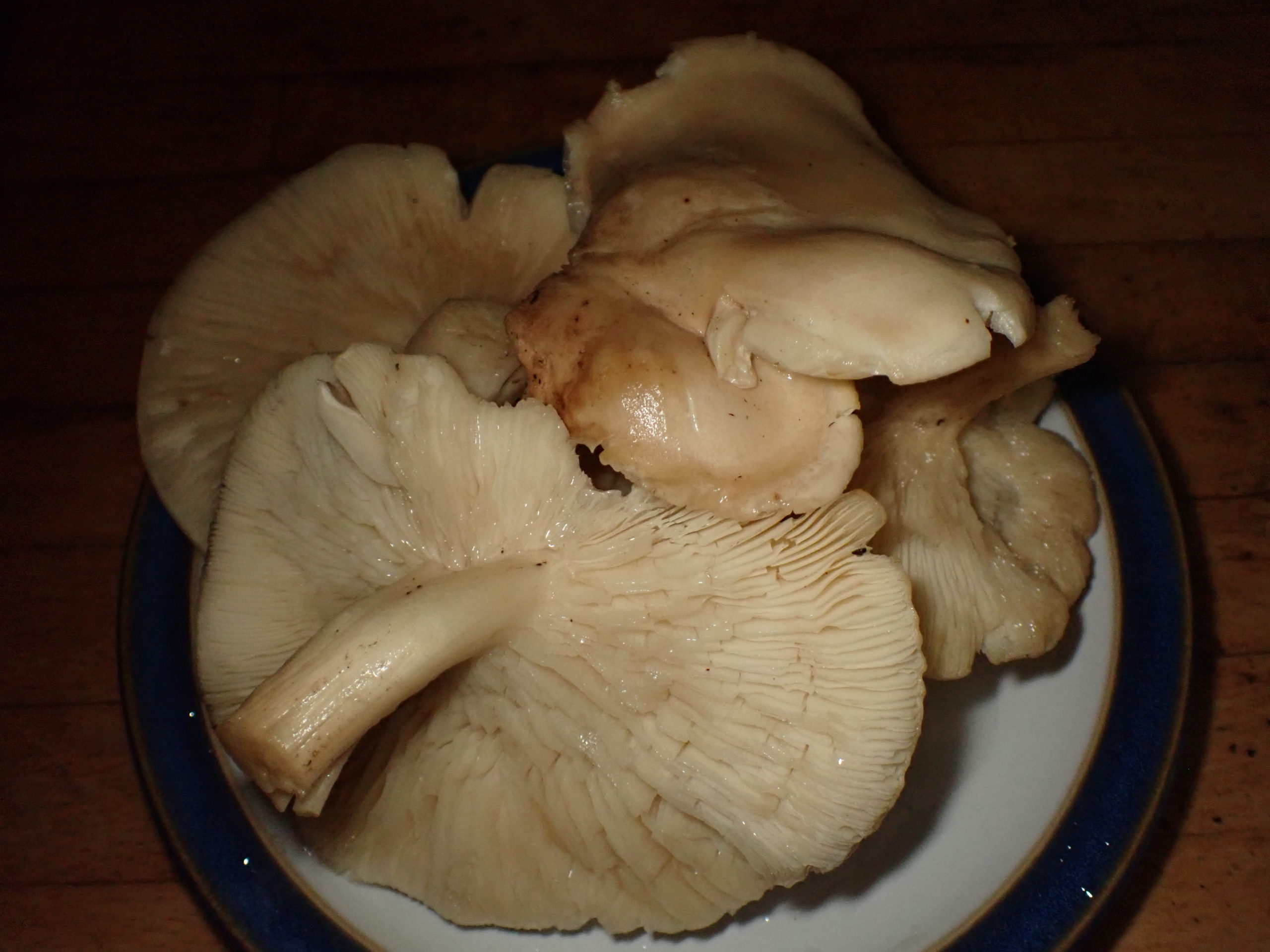
…and the scrambled greens (fast slow food!):
The 22 greens:
1. 3 different Hostas
2. Heracleum sibiricum (Siberian hogweed; sibirbjørnekjeks); flowering shoots
3. Heracleum maximum (cow parsnip); flowering shoots
4. Brassica oleracea (perennial kale; flerårige kål); broccolis
5. Lepidium latifolium (dittander; strandkarse); top shoots
6. Rumex acetosa “Abundance” (non-flowering sorrel; engsyre)
7. Allium scorodoprasum (sand leek; bendelløk)
8. Campanula latifolia (giant bellflower; storklokke); top shoots
9. Campanula trachelium (nettle-leaved bellflower; nesleklokke); top shoots
10. Campanula rapunculoides (creeping bellflower; ugressklokke); top shoots
11. Urtica kiovensis; top shoots
12. Urtica dioica (stinging nettle; brennesle); top shoots
13. Aster komena; top shoots
14. Oenanthe javanica (seri)
15. Bunias orientalis (Turkish rocket; russekål); broccolis
16. Allium nutans
17. Diplotaxis tenuifolia (perennial rocket; flerårig rucola)
18. Allium ochotense (asiatic victory onion; asiatisk seiersløk)
19. Phyteuma nigra (black rampion; svartvadderot)
20. Malva alcea (hollyhock mallow; rosekattost)
Scrambled greens
It started off as scrambled eggs but ended as scrambled “perennial” greens:
 The ingredients:
The ingredients:
Allium ursinum (ramsons /ramsløk)
Allium sativum (garlic /hvitløk); shoots and bulbs
Heracleum sp. (hogweed / bjørnekjeks); 2 species
Dystaenia takesimana (giant Ulleung celery; Ulleung kjempeselleri)
Aegopodium podograria (ground elder / skvallerkål)
Campanula latifolia (giant bellflower / storklokke)
Lamium album (white dead-nettle; døvnesle)
Urtica dioica (stinging nettle / brennesle)
Taraxacum sp. (dandelion / løvetann)
Crambe maritima (sea kale / strandkål)
Ligularia fischeri (Korean ligularia / Koreansk nøkketunge)
Hablitzia tamnoides (Caucasian spinach / stjernemelde)
Rudbeckia laciniata (Cherokee greens / kyss-meg-over-gjerde)
Cirsium oleraceum (cabbage thistle / kåltistel)
Myrrhis odorata (sweet cicely / Spansk kjørvel)
Flowers:
Primula denticulata
Claytonia virginica (spring beauty)
Allium paradoxum
Arabis alpina (alpine rock cress / fjellskrinneblom)
Little Garden Fish: A New Unexpected Edimental
Those that have read my book and follow my blog will know how much I love the stories that follow edible plants around the world and discovering those ornamental plants that I had never expected could be used in the kitchen, turning them into edimentals! My book Around the World in 80 plants is full of them!
The plant known as little vegetable garden fish in Brazil is a case in point and I have to thank Kyle Dougherty for alerting to me to this unlikely edible on my Edimentals and Perennial Vegetables Facebook group.
Brazil isn’t a likely place to search for novel edibles that would be hardy enough to grow in my 63.4°N garden. However, I actually grew this plant for many years before removing it to make way for edible plants. It is Stachys byzantina (syn. S. lanata or S. olympica), lamb’s-ear or woolly hedge nettle (lammeøre here in Norway). It is a perennial in the Lamiaceae or mint family which is native to Armenia, Iran, and Turkey but has been cultivated throughout the temperate world as an ornamental plant, and has escaped, naturalising in many locations. Here in Norway, it doesn’t seem to produce seed, so only spreads vegetatively. It is surprisingly very hardy and is said to be worth trying more or less anywhere here.
So, how is it that the use of this plant from West Asia and known as “peixinhos da horta”, literally little vegetable garden fish in Brazil, is more or less isolated to that country today? In Brazil, the dish and plant have the same name. Some suggest that the name little garden fish is because the taste is fish-like, but others say that it doesn’t taste of fish at all. It’s more likely that it’s because the fried and battered leaves resemble small fish and maybe the association leads to people experiencing a fishy taste? There are a number of “how to” videos on youtube, with and without egg (à Milanesa) (see, https://www.youtube.com/results?search_query=peixinho+da+horta)

It is said that the plant is also used as tea, in omelettes, pasta, steamed and in salads (youngest leaves).
Over the last 10 years several studies of non-conventional vegetables including this plant and its preparation have been published addressing also medicinal uses and nutrition; e,g., “Stachys byzantina (Lamiaceae) has a high nutrient content compared with conventional vegetables including vitamin C, carbohydrates, lipids, proteins, high fiber content, minerals (potassium, calcium, magnesium, phosphorus, sulfur, copper, iron, manganese, zinc and boron) and high content of phenolic compounds which gives antioxidant activity” (Aguiar et al., 2020).
However, the dish of the same name in Portugal is made from cut green bean pods, coated in batter, and fried in oil at high temperatures, but is also prepared with other vegetables, such as pumpkin and green peppers. Intriguingly, these green beans, usually Phaseolus vulgaris, travelled the other way from the Americas to Europe. Was the use of Stachys byzantina in this dish an old way of preparing it which has now died out or did it evolve independently in Brazil based on the basic recipe (there are strong connections of course between Portugal and Brazil). I haven’t been able to find an answer to this question but the fact that the Portuguese name for the plant is peixinho-da-horta , lambari or simply peixinho suggests it was used in the past. The Portuguese wiki page states only that the plant is used in Brazil or was it the other way round and the inspiration came from Brazil?
I have only found one reference in the ethnobotanical literature to Stachys byzantina being wild foraged in its native area. Civelek and Balkaya (2013) list some 19 wild vegetables in the Black Sea region of Turkey, providing a nutritional analysis of all and stating only that the leaves are roasted. The table below from this paper lists all 19.

A number of cultivars exist including white flowering and dwarf forms (see https://www.rhs.org.uk/plants/search-results?query=stachys%20byzantina):
‘Big Ears’ – leaves very large, up to 25 cm long.
‘Cotton Boll’ – a sterile cultivar that does not produce flowering stems. Asexually propagated.
‘Primrose Heron’ – leaves yellow in spring; flowers pink
‘Sheila Macqueen’ – sterile; low-growing; leaves large.
‘Silky Fleece’ – grows 25 cm tall with lilac-plum flowers, produce smaller white-woolly foliage. Seed propagated.
‘Silver Carpet’ – sterile; leaves grey. Asexually propagated.
‘Striped Phantom’ – leaves variegated.
There are other examples of plants that have travelled far before being adopted in another country far from home. Shungiku or chopsuey greens (Glebionis coronaria),is an important supermarket vegetable today in Japan, but there are only sparse records of use in the past in the Mediterranean countries where it originated. See https://www.edimentals.com/blog/?p=22710
A story says that the dish peixinhos da horta was introduced to Japan by Portuguese sailors Antonio da Mota, Francisco Zeimoto and Antonio Peixoto in the sixteenth century, where it was eventually developed into tempura: I wonder what plants were used at that time. Did our lamb’s ears make another long journey together with the recipe? In Japanese the plant is known as cotton chorogi. Chorogi is another edible in the Stachys genus, S. sieboldii, also known as the Chinese artichoke (see picture gallery of other edibles in the genus Stachys below).
I found at least one page Stachys byzantina, a largely ornamental plant also in Japan, is prepared with tempura – see https://ameblo.jp/eruma56/entry-11581777515.html (it notes, however, that this plant arrived in Japan in the early 20th century).
Stachys byzantina is also of value to many insects and hummingbirds (the latter in the Americas, of course), but in particular bees. The wool carder bee / storullbie (Anthidium manicatum) even collects the fuzz from the leaves, used in nest making in decayed wood. It has also been documented that bumble bees congregate early in the day to collect the water condensation that has accumulated on the leaves. This is therefore a multi-purpose plant, edible, nature friendly as well as ornamental, what I term an edi-ento-mental!
 Anthidium manicatum by Bruce Marlin – Own work, CC BY-SA 2.5, https://commons.wikimedia.org/w/index.php?curid=662209
Anthidium manicatum by Bruce Marlin – Own work, CC BY-SA 2.5, https://commons.wikimedia.org/w/index.php?curid=662209
Here are pictures of a few other plants in the genus Stachys:
Civelek, C. and Balkaya, A. 2013. The nutrient content of some wild plant species used as vegetables in Bafra Plain located in the Black Sea Region of Turkey. The European J. Plant Science and Biotechnology.
Aguiar, T., Nues, A. and de Souza Damasceno, M., 2020. Unconventional food plants foud in Santa Catarina State: nutritional and therapeutic potential. Revista Eletrônica Científica Ensino Interdisciplinar. Mossoró, v.6, #18 (see http://dx.doi.org/10.21920/recei72020618731753)
Toad lilies: great edientomentals
Toad lilies (Tricyrtis sp.) are great edientomentals from the Far East; i.e. both food for us to eat (the edi bit), eye food (the mental bit ;) ) and food for the pollinators like bumble bees (the ento bit).
I’ve been meaning to try to research this genus properly for many years ever since I ate the young shoots 10 years ago (it tasted mild and good). I’ve tried 10+ species over the years, but only the early flowering species thrive (Tricyrtis latifolia is I think the most successful of the two). Bumble bees love them too as can be seen in the video below!
Below the pictures is an overview of how different species Tricyrtis are used in Japan. It indicates that the flowers can also be used at least in moderation for decoration, so I must give it a go!


Tricyrtis in the kitchen
All I have so far is that 6 or 7 species are listed in my comprehensive Japanese foraging book (in Japanese): Wild Food Lexicon (Japan) and this is what it says (there are no warnings of possible toxicity and it encourages the reader to get and grow a couple of the species):
Tricyrtis latifolia (Tamagawa hototogisu)
Eat young shoots. You can eat other types of Tricyrtis so don’t worry if you make a mistake. Rest assured. You can pick it even if the stems are long, you can pick the soft young shoots until they bloom.
Boil in hot water with a pinch of salt, then rinse in cold water. In boiled food, soup, tempura…
Tricyrtis macropoda
It can be eaten like Tamagawa hototogisu, but the ones with a lot of hairs have an inferior taste.
Tricyrtis macrantha
Boiled soup. For tempura etc. It has a crisp texture. Boil briefly, soak in cold water, boil, cut into small pieces and season with mustard. The young shoots are the most flavourful amongst the hototogisu.
Tricyrtis macranthopsis
Seedlings for cultivation are on the market. You can grow it and use it as food.
Around May, pick young shoots that grow diagonally. Even those with long stems can be eaten by picking the soft part at the tip of the stem.
Tricyrtis perfoliata
Young shoots are “hard”? in quality. Floating the flowers in the soup and enclosing them in jelly will make them beautiful. Get it, grow it and taste it!!
The first Udo photo shoot for 2024
Despite the record warm May here at 63.4N with temperatures up to 30C and drought like conditions (forest fire warnings on the news every day), my now 23 year old udo (Aralia cordata) has grown away well, but perhaps not as vigorous as normal in cooler damper conditions which are the norm for May. Sadly, my California-udo (Aralia californica) which was in a much drier location seems to have died, although I have a clone in the World Garden at the Væres Venner Community Garden.
Thanks to KVANN member Nina Sandli who took the picture on a visit on 25th May!
More about my super vegetable in many blog posts, see https://www.edimentals.com/blog/?s=udo
or read about it in my book Around the World in 80 plants!
Dandelions in pink, white and yellow
16th May 2024: Dandelions in white, pink and (self-sowed) yellow in the Asian part of the World Garden at the Væres Venner Community Garden in Trondheim. I planted both Taraxacum albidum, Taraxacum leucanthum and Taraxacum pseudoroseum in this part of the garden and it turns out, thanks to Lisa Wesley of Growild Nursery that it isn’t albidum but Taraxacum albiflos. Will post separate albums below showing detailed studies of the pink and white one in case anyone has a key to these (there are several white flowered dandelion species in Asia).
Botanical details of what I’m growing as Taraxacum pseudoroseum in the World Garden at the Væres Venner community garden in Trondheim:
Botanical details of Taraxacum albiflos in the World Garden at the Væres Venner community garden in Trondheim.
Hosta and Seri salad
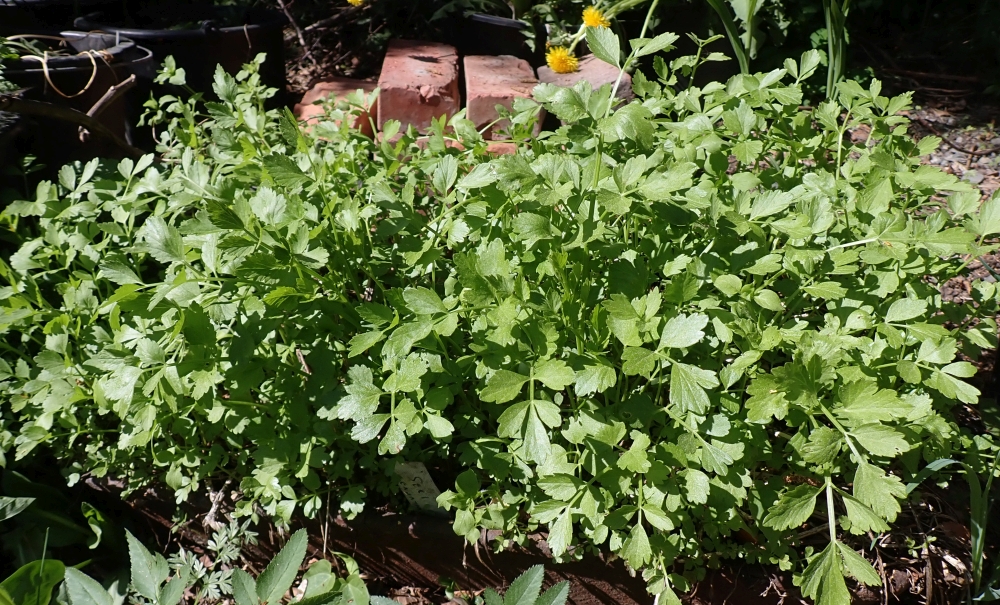
I’ve been making a little blanched Hosta salad for lunch this week. Just cover your plant before the shoots appear in spring, cut and serve with a Japanese dipping sauce – roasted sesame oil mixed with soy sauce. I also used Japanese Oenanthe javanica (seri) this way one day too and both were delicious!


Soba perennial veg stir-fry
This week’s perennial veg stir-fry with soba (buckwheat noodles), Japanese style contained the following (roughly left to right in the picture):
Nettles / stornesle (Urtica dioica)
Burdock / storborre roots (Arctium lappa); stored in the cellar
Wapato tubers (Sagittaria latifolia); stored in the cellar in water
Ramsons / ramsløk (Allium ursinum)
Caucasian spinach / stjernemelde (Hablitzia tamnoides)
Giant bellflower / storklokke (Campanula latifolia)
Himalayan water creeper (Houttuynia cordata) – reddish shoots
Sand leek / bendelløk (Allium scorodoprasum)
Garlic / hvitløk (Allium sativum)







